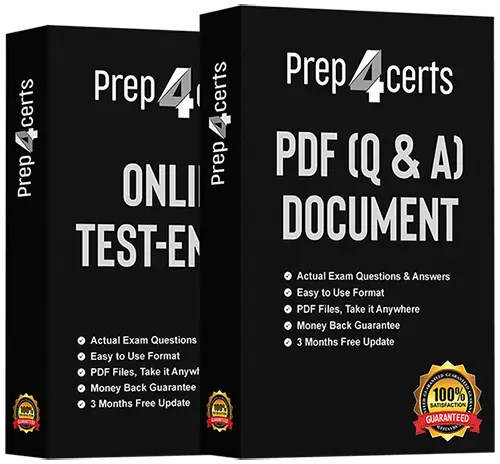
| Exam Code | 1z0-1071-20 |
| Exam Name | Oracle Cloud Platform Digital Assistant 2020 Specialist |
| Questions | 72 Questions Answers With Explanation |
| Update Date | July 11,2024 |
| Price |
Was : |
Are you ready to take your career to the next level with Oracle Cloud Platform Digital Assistant 2020 Specialist? At Prep4Certs, we're dedicated to helping you achieve your goals by providing high-quality 1z0-1071-20 Dumps and resources for a wide range of certification exams.
At Prep4Certs, we're committed to your success in the Oracle 1z0-1071-20 exam. Our comprehensive study materials and resources are designed to equip you with the knowledge and skills needed to ace the exam with confidence:
Start Your Certification Journey Today
Whether you're looking to advance your career, expand your skill set, or pursue new opportunities, Prep4Certs is here to support you on your certification journey. Explore our comprehensive study materials, take your exam preparation to the next level, and unlock new possibilities for professional growth and success.
Ready to achieve your certification goals? Begin your journey with Prep4Certs today!
Which statement is FALSE regarding out-of-order messages?
A. Out-of-order messages are not handled by default. Designers must define out-of-order message
handlers at the skill level.
B. Dialog flow navigation continues with the state referenced in the out-of-order-message action
C. Chatbots don't control the user's input and, therefore, cannot prevent users from selecting out-ofscope actions.
D. Out-of-order messages occur when a user scroll the conversation history displayed in the messenger
client and selects that is no longer in scope for the current conversation.
Error handlers can be defined in various locations with different scopes.Which three statements are true about error handling?
A. An error handler can be defined as a transition on any dialog flow state in a skill.
B. The system error handler is called in case of an error when no error handling is defined on the current dialog flow state or as a default transition.
C. You can define a system-wide custom error handler at the digital assistant level.
D. Implicit error handling is always performed even if there are other error handlers defined in the flow.
E. An error handler can be defined globally for a skill using the defaultTransition error transition.
What happens if there is a system error and the state does not have an error action?
A. The skill transitions to the state that is defined by the defaultTransitions error action. If there isn't one, then it outputs the Unexpected Error Prompt value.
B. The skill transitions to the state that is defined by the next action. If there isn't one, then it transition to the defaultTransitions error action.
C. The skill transitions to the state that is defined by the next action.. If there isn't one, then it transitions to the next state in the dialog flow.
D. The skill outputs the Unexpected Error Prompt value and then transitions to the state that is defined
by the defaultTransitions error action. If there isn't one, then it ends the conversation.
What happens if there is a system error and the state does not have an error action?
A. The skill transitions to the state that is defined by the defaultTransitions error action. If there isn't one, then it outputs the Unexpected Error Prompt value.
B. The skill transitions to the state that is defined by the next action. If there isn't one, then it transition to the defaultTransitions error action.
C. The skill transitions to the state that is defined by the next action.. If there isn't one, then it transitions to the next state in the dialog flow.
D. The skill outputs the Unexpected Error Prompt value and then transitions to the state that is defined
by the defaultTransitions error action. If there isn't one, then it ends the conversation.
You are advised to implement an 80/20 split with training and test utterances. This means that 80% of new utterances harvested from the conversation logs should be used as intent training utterances and 20% for testing.Why is this a good practice?
A. Adding 100% of user phrases to the intent would overload the model.
B. Batch testing works more efficiently when there is a ratio of one test utterance for every five training utterances.
C. By performing an 80/20 split, you are randomizing which data is added to the utterances.
D. By keeping 20% for testing, you are able to test the model with data on which it has not been specifically trained.
Which variable type is automatically set with values from the chat client,such as locate and timezoneoffset?
A. System variables
B. Variables that are defined in the context section in the dialog flow
C. User variables
D. System.config variables
E. Profile variables